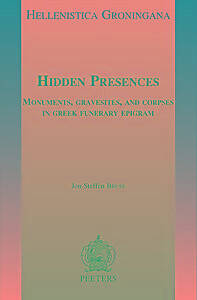
- Afhalen na 1 uur in een winkel met voorraad
- Gratis thuislevering in België vanaf € 30
- Ruim aanbod met 7 miljoen producten
- Afhalen na 1 uur in een winkel met voorraad
- Gratis thuislevering in België vanaf € 30
- Ruim aanbod met 7 miljoen producten
Zoeken
Omschrijving
Hidden Presences explores the inheritances of Hellenistic literary epigram from the sepulchral sub-genre of inscribed epigram. Divorced from the stone and the burial site, the literary form enjoys a new freedom, but exhibits this independence in a deliberate but creative use of out-of-date themes (notably roadside placement of the monument), subversive use of the inscribed epigrams' attempt to betray the "hidden presence" of the deceased, and exploitation of sepulchral conceits surrounding cenotaph. Indeed, this study shows not only that the fourth- and third-century poets at the headwaters of the literary tradition were interested in inscriptional precedents, but also that this interest was exercised down to the time of the epigrammatist Meleager. The poets within the variative community of literary epigram therefore carry on a literary conversation not simply between themselves, but between themselves and the inscribed tradition, and among themselves about the inscribed tradition.
Specificaties
Betrokkenen
- Auteur(s):
- Uitgeverij:
Inhoud
- Aantal bladzijden:
- 201
- Taal:
- Nederlands
- Reeks:
Eigenschappen
- Productcode (EAN):
- 9789042916418
- Verschijningsdatum:
- 20/09/2005
- Uitvoering:
- Hardcover
- Formaat:
- Trade paperback (VS)
- Afmetingen:
- 158 mm x 243 mm
- Gewicht:
- 353 g

Alleen bij Standaard Boekhandel
+ 80 punten op je klantenkaart van Standaard Boekhandel
Beoordelingen
We publiceren alleen reviews die voldoen aan de voorwaarden voor reviews. Bekijk onze voorwaarden voor reviews.











